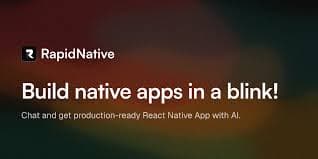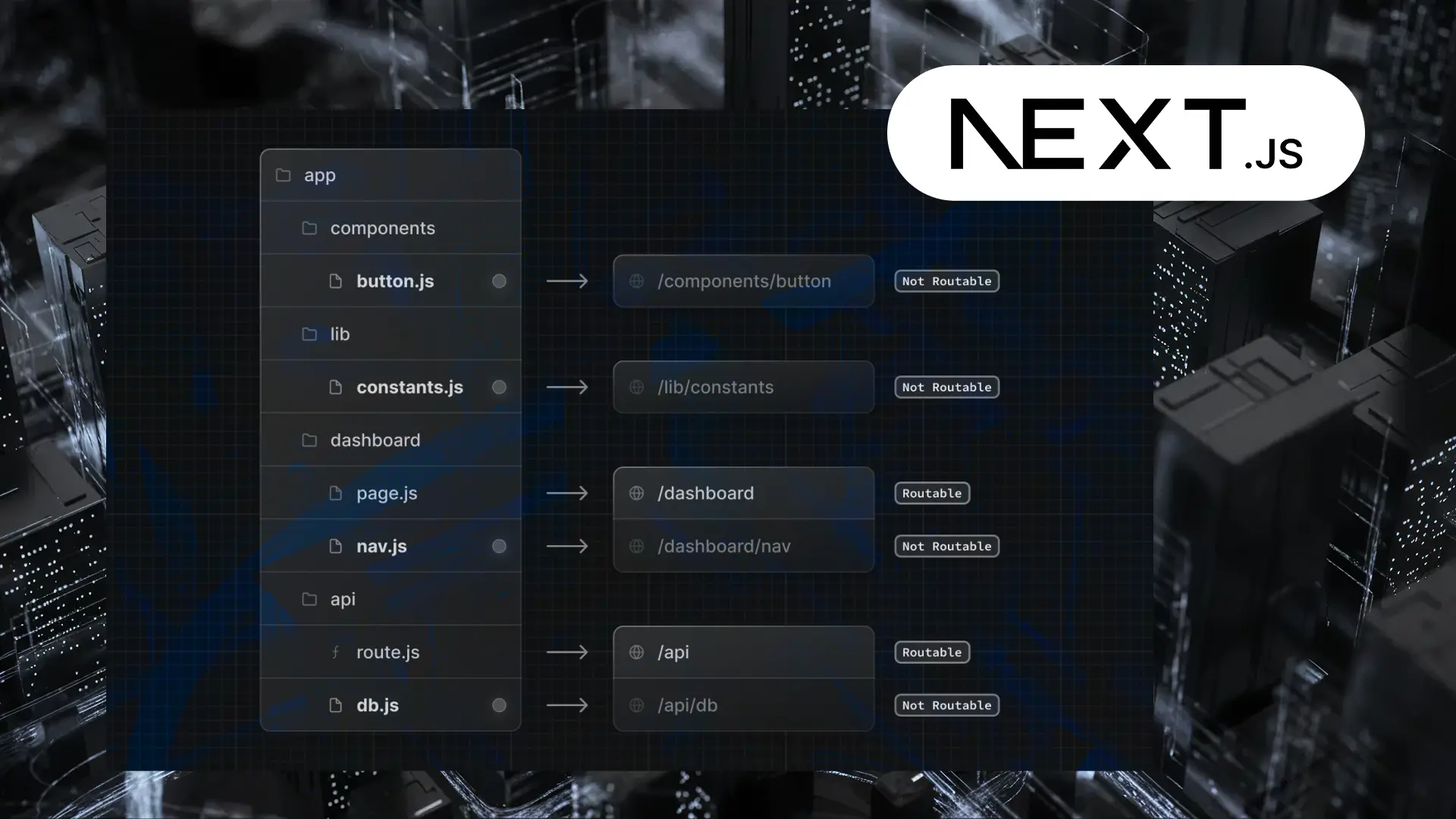Table of Contents
How to Build a Personalized AI Fitness Coach for the U.S. Market - with Live Demo
Author

Subject Matter Expert

Date

Book a call
Sweat alone does not guarantee results. In the U.S., where the personal training industry is valued at $10 billion, many fitness apps still offer generic routines that fail to engage users effectively. Meanwhile, the global fitness app market is projected to surge from $3.3 billion in 2019 to $15.6 billion by 2028, highlighting a growing demand for more personalized solutions.
This blog delves into building an AI-driven fitness coach tailored for the U.S. market, focusing on real-time adaptability, wearable integration, and context-aware guidance. Featuring a live demo and production-grade architecture, we'll explore data ingestion, plan generation, and intelligent coaching via conversational AI. For health tech innovators, this guide offers a practical roadmap to creating personalized fitness experiences that truly resonate.

Source: statista
Explore How AI Can Transform Your Fitness Journey: Why They Are on Trend
AI is quietly becoming the backbone of modern fitness. What began with basic step counters has now evolved into intelligent coaching systems capable of learning, adapting, and motivating in real time. These AI-powered fitness coaches don’t just tell users what to do—they understand individual goals, track progress dynamically, and adjust recommendations based on real-time feedback.
What’s driving the trend? Accessibility and personalization. Thanks to open-source frameworks like Gradio and powerful LLMs, it’s now possible to build virtual trainers that deliver studio-quality experiences at scale—without the cost or constraints of human trainers.
Users are responding. In a market saturated with cookie-cutter fitness apps, AI stands out by offering contextual, 24/7 coaching that evolves with the user. For developers and founders, it’s no longer a question of why AI in fitness—it’s how soon you can build it.
At the Healthcare Meetup 2025 hosted by GeekyAnts at Microsoft Reactor, Manav Goyal, Principal Technical Officer at GeekyAnts, dives into how AI is revolutionizing personalized healthcare. From intelligent health coaching to real-time anomaly detection, he showcases innovations transforming self-care, clinical workflows, and healthcare accessibility.
Step-by-Step Guide to Building Your Personalized AI Fitness Coach
This is not a theoretical breakdown. Everything you will read here is based on our actual implementation of a personalized AI fitness coach system at GeekyAnts. We have built and tested the full-stack architecture—end-to-end—including wearable integration, intelligent plan generation, conversational AI, and real-time system monitoring.
If you are a developer, startup founder, or health tech innovator, this guide is meant to give you the exact technical blueprint to build a production-ready AI fitness coach. We will walk through each step using the architecture diagram below.

Architecture Layers Overview
- User Interaction Layer – App interface and AI chatbot
- Data Collection Layer – Wearables + user input data stream
- AI Processing Layer – LLM-based plan engine + monitoring
Planning System Layer – Custom workout plans and real-time adjustments
Step 1: Integrate Wearable Data Streams
(Architecture Layer: Real-Time Wearable Data)
We start by pulling real-time health metrics from devices like Fitbit, Apple Watch, and Garmin using the Tryvital API. These values include steps, heart rate, sleep quality, and energy burn.
Set up a webhook listener to ingest this data:
The ActivityTransformer normalizes data and sends it to Amazon S3. From here, AWS Step Functions handle orchestration for downstream processing.
Step 2: Run AI Analysis & Plan Generation
(Architecture Layer: AI Analysis System + LLM Coach)
Once health data is in the system, we trigger a LangChain-based LLM pipeline to generate daily or weekly fitness plans.
Define System Prompt (LLM Behavior)
Construct the LLM Chain
This chain fetches indexed scientific content from AWS Kendra and generates a goal-aligned plan using Bedrock-hosted LLMs.
Step 3: Generate Personalized Workout Plans
(Architecture Layer: Long-term Health Plan + Personalized Recommendations)
We implement dynamic logic to adjust the plan based on ongoing metrics like adherence, fatigue, or sleep quality.
The plan includes:
- Workout splits (e.g., PPL, Upper/Lower)
- Target heart rate zones
- Suggested rest days and durations
- Macro recommendations tied to user goals
Step 4: Add a Conversational AI Assistant
(Architecture Layer: Conversational Interface)
The assistant acts as a 24/7 coach. It pulls real-time data and plan info via RAG (Retrieval-Augmented Generation) to respond with contextual accuracy.
Define the Assistant Prompt
What it Can Do
- Adjust plans if the user says “I’m tired today”
- Recommend meals after specific workouts
- Detect repeated stress and suggest modifications
All context (workout history, mood logs, sleep) is stored and referenced during every interaction.
Step 5: Build a Notification & Nudge System
(Architecture Layer: Monitoring System + Alerts)
We use AWS EventBridge to schedule personalized notifications that adapt based on user behavior.
Prompt Template for Daily Summary
These messages are behaviorally timed—not spammed—based on when the user typically engages.
Step 6: Enable Cross-Device Sync
(Architecture Layer: Cross-Platform Sync)
Data from multiple sources is normalized, versioned, and stored for consistency.
This system handles:
- Time zone offsets
- Data duplication checks
- Source reconciliation (Apple vs Fitbit)
Step 7: Secure the System (HIPAA-ready)
(Architecture Layer: Privacy & Compliance)
Every LLM input is sanitized, and sensitive data is never passed to external services unmasked.
Data Masking Snippet
Security measures include:
- MFA for admin dashboards
- Field-level encryption
- Tokenized access
- Audit logs for every API call
Step 8: Log, Monitor & Optimize
(Architecture Layer: Monitoring + Evaluation)
An intelligent AI fitness system requires more than real-time recommendations. Continuous feedback loops and robust monitoring are essential to ensure reliability, adaptability, and precision.
All prompt inputs, token usage, latency, and output quality are tracked using LangSmith, while AWS CloudWatch monitors infrastructure metrics such as memory utilization, request throughput, and system availability.
This setup enables us to:
- Identify Response Failures and Model Drift
Chain-level logs help detect inconsistencies, hallucinations, and incomplete outputs, allowing for early resolution before issues reach users. - Refine Prompt Templates
Prompt flows are versioned and tested like code. Low-performing sequences are flagged, reviewed, and optimized based on observed behavior.
Balance Cost and Performance
Monitoring helps determine where lighter models or lower-cost configurations can be used effectively, improving resource effic
Managing Hallucinations with Pydantic and Controlled Prompt Design
To maintain structure and accuracy in AI-generated responses, the system integrates the Pydantic library for output validation. This ensures all outputs follow strict data formats and are safe for downstream processing.
Key Approaches:
Schema-Based Output Parsing
- This guarantees that outputs are predictable, structured, and easy to interpret.
- JSON Serialization for Reliability
Pydantic automatically formats outputs in JSON, eliminating ambiguity in how data is interpreted or consumed.
Prompt Scoping and Boundaries
Responses are limited in length and scope to minimize drift and ensure domain adherence.
- Grounded Generation via RAG
Retrieval-augmented generation, powered by AWS Kendra, supplies trusted data to the LLM. This reduces dependency on assumptions and ensures factual accuracy.
Results and Operational Impact
The combination of structured logging, Pydantic-based validation, tightly scoped prompts, and retrieval-grounded reasoning provides a solid framework for managing quality and consistency at scale.
This system architecture is designed for sustained performance and regulatory alignment. It supports the demands of high-traffic wellness applications, fitness platforms, and healthcare integrations—ensuring that AI responses remain relevant, trustworthy, and compliant.
Beyond the Code: Ethical Considerations That Build Trust in AI Fitness Coaching
As AI reshapes fitness and healthcare, ethical considerations must guide every layer of the system. Our approach is grounded in three pillars: data privacy, medical accuracy, and clear communication boundaries—all essential for trust, compliance, and real-world use.
1. Data Privacy and Security
Handling health data requires more than encryption—it demands discipline in design.
- Minimal Data Collection: We collect only what’s necessary to personalize services and limit exposure.
- Data Segregation: Health metrics and user identifiers are stored separately, with independent handling protocols.
- Secure Integrations: All third-party connections—such as wearable syncs—are verified and encrypted.
- Access Control: Internal systems are protected through role-based access and multi-factor authentication.
- PII Masking: Personally identifiable information is masked using a custom DataMasker before reaching any LLM process.
All activities are logged, with full audit trails aligned to HIPAA and other regulatory frameworks.
2. Ensuring Medical Accuracy
To avoid unverified claims, AI outputs are grounded using Retrieval-Augmented Generation (RAG) backed by AWS Kendra.
- Verified Sources Only: Kendra indexes scientific papers, guidelines, and trusted health repositories.
- Real-Time Sync: A centralized ingestion pipeline keeps the AI’s knowledge base current.
- Regular Audits: Data is reviewed periodically to align with evolving clinical standards.
This architecture ensures all responses are evidence-backed and contextually appropriate.
3. Defining Clear Medical Boundaries
Prompt logic is structured to limit the system’s role to wellness guidance—never medical advice.
These boundaries are enforced by prompt templates and response filters, keeping interactions safe, relevant, and within scope.
Operational Impact
Ethical safeguards are embedded—not layered on. With secure data handling, medically grounded insights, and scoped interactions, the platform is designed to meet the trust standards required in health-focused AI systems.
Unique Features, Best Practices & Tips for AI Fitness Projects
Crafting an AI fitness coach that truly works requires more than LLM integration—it demands thoughtful systems that adapt, respond, and earn user trust. Here's what separates production-grade builds from prototypes.
Unique Features That Set It Apart
- Contextual Plan Recalibration
Adjusts daily routines based on recovery data, skipped sessions, and wearable inputs. - Conversational Coaching with Memory
AI remembers injuries, preferences, sleep cycles—enabling real, two-way fitness conversations. - Evidence-Grounded Feedback
Suggestions aren’t generic—they’re backed by indexed scientific literature via AWS Kendra. - Integrated Multi-Modal Inputs
Tracks data from steps, sleep, macros, mood, HRV—then maps it to adaptive plans. - Daily AI Nudges with Positive Reinforcement
Notifications aren’t alerts—they’re personalized, behaviorally-timed performance summaries with motivation baked in. - Recovery-Aware Programming
Workouts scale down automatically when sleep, strain, or stress indicators are out of range. - Modular Plan Composition
Plans are not static—they're composed dynamically using LLM chains, enabling real-time flexibility.
Best Practices from Implementation
1. Separate Personal Identity from Health Data
Always decouple personally identifiable information (PII) from fitness and biometric data. Store and process them in distinct systems. This limits risk exposure and supports regulatory compliance, especially under HIPAA and GDPR.
2. Treat Prompts as Production Code
Prompt templates define system behavior and should be managed like any core software asset. Use version control, automated testing, and live monitoring to ensure reliability and adaptability as models evolve.
3. Ground Responses with Retrieval-Augmented Generation
To maintain trust and accuracy, AI responses should reference verified sources. Retrieval-augmented generation ensures that fitness plans, nutrition advice, and recovery recommendations are anchored in scientific evidence, not model assumptions.
4. Validate AI-Generated Plans with Professional Standards
All recommendations should be automatically checked against industry standards, such as ACSM guidelines for training or WHO protocols for nutrition. This protects user safety and reinforces expert alignment.
5. Monitor LLM Chains for Stability and Quality
Use tools like LangSmith to observe token usage, latency, and output integrity across LLM workflows. This visibility helps detect silent failures and performance regressions before they reach users.
6. Use Reliable Workflow Orchestration
For operations involving asynchronous data, like wearable inputs, session tracking, and plan updates, employ orchestrators such as AWS Step Functions. This ensures that complex, multi-step logic runs consistently and can recover from partial failures.
7. Build Offline-Ready Systems
Core functionality must remain available without an internet connection. Cache recent plans and queue logs locally. Synchronization should resume seamlessly once connectivity returns.
8. Time Notifications Around User Behavior
Notifications should follow behavioral patterns, not system events. Use historical interaction data, such as workout times or sleep cycles—to time nudges for maximum relevance and engagement.

Business Benefits of Building an AI Personal Trainer App
Companies that have embraced AI in fitness are already seeing tangible returns. Take Freeletics, for example—its AI-powered fitness coach helped the company surpass 52 million users globally by offering customized workouts and adaptive routines based on user performance. Similarly, Aaptiv transitioned from instructor-led audio workouts to a hybrid AI model, increasing user retention through personalized daily coaching.
These platforms prove that AI coaching isn’t just scalable—it’s sticky. Users stay longer when plans evolve with their lifestyle, and businesses save on instructor overhead without compromising on personalization.
Additionally, AI-generated insights open up cross-selling opportunities—nutritional plans, smart wearables, supplements—all tailored by user data. And with every interaction captured, businesses gain a feedback loop that continuously improves the product experience.
The result? Higher LTV, stronger engagement, and a brand that grows with the user—not around them.
Tech Stack to Consider for Building an AI Personal Trainer App
Building a production-grade AI fitness coach demands a robust, scalable, and adaptable tech stack. Below is a breakdown of the core technologies we’ve used in our internal architecture, aligned with industry best practices.
| Layer | Technology/Tool | Purpose |
| Frontend | Streamlit / React Native | Build responsive web/mobile interfaces for real-time engagement |
| Wearable Integration | Tryvital API | Terra API | Unified access to data from Fitbit, Apple Watch, Garmin, and more |
| Backend Framework | FastAPI / Node.js | REST API management, async data processing |
| AI Engine (LLM) | AWS Bedrock + LangChain | Context-aware plan generation and conversational AI |
| RAG Integration | AWS Kendra | Retrieve verified health and fitness knowledge for grounding LLM outputs |
| Prompt Orchestration | LangChain Chains | Modular, traceable prompt execution pipelines |
| Plan Logic Layer | Python Services + Transformers | Analyze data and trigger adjustments to plans dynamically |
| Notifications System | AWS EventBridge + FCM | Behaviorally-timed alerts and daily summaries |
| Storage & Pipelines | Amazon S3 + AWS Step Functions | Data orchestration and real-time flow between components |
| Security & Privacy | DataMasker (custom) | Auth | TLS | Field-level masking of sensitive user data (email, phone, health info) |
| Monitoring | AWS CloudWatch + LangSmith | Track LLM performance, latency, token usage, and hallucination risk |
This stack allows teams to start lean, iterate fast, and scale across platforms—without compromising user experience, security, or accuracy.
How GeekyAnts Can Help You Build AI-Powered Fitness Apps
At GeekyAnts, we combine technical depth with domain insight to build intelligent fitness and healthcare platforms that scale. Our focus lies in crafting systems that go beyond data collection—designed to interpret, respond, and evolve alongside the user.
In one of our recent implementations, we built a personalized AI fitness coach powered by AWS Bedrock, LangChain, and real-time wearable integrations. The system dynamically adjusted workout plans based on sleep, stress, and adherence—leveraging prompt chaining and Retrieval-Augmented Generation (RAG) to deliver context-aware recommendations.
We have also extended our AI capabilities into healthcare, building solutions for remote monitoring, chronic care management, and self-guided recovery—where the AI assistant acts as a continuous layer of support.
Whether you are building a fitness companion or a healthcare automation tool, we bring experience in full-stack AI systems—from data pipelines and compliance to conversational UX and performance monitoring.
Partner with us to turn your AI vision into a product users trust and return to daily.
What the Future Holds for AI in the Fitness Industry
The integration of AI into fitness is poised to redefine personalized health experiences. Emerging technologies are enabling real-time biometric feedback, allowing for workouts that adapt instantly to a user's performance and physiological signals. Advancements in augmented reality (AR) and virtual reality (VR) are creating immersive training environments, enhancing user engagement. AI-driven predictive analytics are being utilized to foresee potential injuries by analyzing movement patterns, thereby promoting safer training regimens. Furthermore, the incorporation of emotional recognition technologies aims to tailor workouts that consider mental well-being, offering a holistic approach to fitness. The future of AI in fitness is centered on creating adaptive, responsive, and comprehensive wellness solutions that cater to individual needs.
FAQ about AI Fitness Coach / Trainer
1. How much does it cost to build an AI Fitness Trainer app?
The cost typically ranges from $40,000 to $120,000, depending on app complexity, number of features (like chatbot, wearable sync, plan engine), and deployment platforms (iOS, Android, Web). Advanced AI features like LLM integration, real-time feedback, and privacy compliance (HIPAA/GDPR) can increase development costs.
2. Can I build an AI fitness app without coding experience?
You can prototype using no-code platforms, but building a reliable, secure, and AI-driven fitness app requires collaboration with developers and AI engineers—especially for real-time data handling, wearable integration, and prompt-based plan generation.
3. How can businesses monetize their AI fitness apps?
Common models include freemium subscriptions, premium coaching tiers, in-app purchases (personalized plans, meal guides), affiliate health products, and B2B white-labeled versions for fitness creators or clinics. AI personalization opens doors to high-conversion upsell opportunities.
4. Is GPT-4o accurate for fitness recommendations?
Yes—when grounded with user data and connected to trusted fitness knowledge bases via RAG (Retrieval-Augmented Generation). With proper prompt design and system boundaries, GPT-4o delivers context-aware, actionable guidance that adapts over time.
5. Can I customize the AI coach for different fitness goals?
Absolutely. The AI adapts dynamically for goals like weight loss, muscle gain, endurance training, or injury recovery. It modifies plan intensity, workout types, and recovery strategies to align with user intent and evolving metrics.
6. Can I update my workout plan as my goals or schedule changes?
Yes. The system is built for flexibility. Whether users shift their workout timing, frequency, or overall objectives, the AI recalibrates in real time—offering updated routines without needing manual configuration.
7. Can I integrate data from wearables like Fitbit or Apple Watch?
Yes. Integration through APIs like Tryvital enables seamless syncing with major wearable devices. This allows the AI to track steps, heart rate, sleep, and other metrics in real time—and adjust plans accordingly.
Dive deep into our research and insights. In our articles and blogs, we explore topics on design, how it relates to development, and impact of various trends to businesses.





